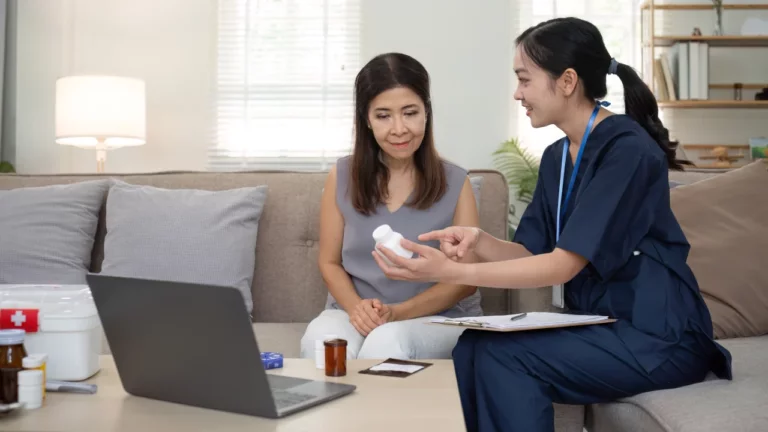Chronic diseases such as heart failure, COPD, diabetes, and hypertension are major contributors to acute care utilization, including hospital admissions and emergency department visits. While not all chronic conditions lead to hospitalization, poorly managed or undetected exacerbations can result in avoidable admissions.
As healthcare systems globally face increasing pressure due to the rising number of chronic disease patients, finding ways to reduce hospitalizations and improve disease management outside of the hospital is essential.
One of the solutions that has gained significant traction is Remote Patient Monitoring (RPM). RPM is an emerging solution that shows promise in monitoring patients’ vital signs and enabling early intervention, potentially reducing acute care utilization. However, the effectiveness can vary based on the patient’s specific needs and engagement with the technology.
A recent systematic review examined 91 studies and found that RPM has shown a significant reduction in hospital admissions, length of stay, and emergency department visits for certain patient populations.
This article explores how RPM can help reduce the need for acute care. Additionally, we will explore how DrKumo’s RPM platform can play an integral role in helping healthcare providers deliver more effective care to patients with chronic conditions.
The Effectiveness of RPM in Reducing Acute Care Utilization
RPM involves using connected devices to continuously monitor patients’ health metrics, such as blood pressure, heart rate, blood glucose levels, and oxygen saturation. By securely transmitting this data to healthcare providers, RPM has demonstrated the ability to enable the earlier detection of critical or emerging health issues, which can help healthcare teams intervene more proactively and reduce the likelihood of hospital admissions or emergency visits.
A systematic review by Taylor et al. (2021) analysed 91 studies published from 2015 to 2020. The study found that RPM effectively reduced acute care utilization across several chronic conditions in several studies, but the effectiveness varied depending on the patient population, technology used, and study methodology. Specifically, 49% of the studies found a reduction in hospital admissions, 49% reported a decrease in length of stay, and 41% showed reduced emergency department visits. The positive effects were observed in several studies, especially among those with COPD and CVD, but the results may vary.
Similarly, another meta analysis from 2015 reported a reduction in hospital admissions in patients with implantable cardiac devices that were monitored remotely. Similarly, a nationwide assessment demonstrated that invasive RPM (such as implantable defibrillators and pacemakers) was more effective at reducing hospital admissions and length of stay compared to non-invasive RPM methods. These findings emphasize that continuous monitoring through invasive devices enables healthcare providers to manage conditions more effectively, avoiding hospitalizations.
COPD and RPM: A Case Study in Acute Care Reduction
RPM has shown potential benefits in reducing acute care utilization for COPD, though results vary based on the type of monitoring technology used and patient-specific factors. According to Taylor et al. (2021), RPM was shown to be particularly effective for managing COPD.
But as with any intervention, its effectiveness may vary based on patient needs and condition severity. A cluster-randomised trial in 2017 reported a reduction in hospital admissions and COPD-specific admissions for certain patient populations using RPM, with COPD patients showing a 15.16% reduction in all-cause hospitalizations, and a 20.27% reduction in COPD-specific admissions.
The study suggests that RPM’s effectiveness may vary depending on the type of monitoring technology used and patient-specific factors, such as the severity of the condition and the presence of comorbidities. For example, invasive monitoring, such as with cardiac implantable devices, had a stronger impact on reducing hospital admissions than non-invasive monitoring methods, likely due to the continuous nature of invasive data collection.
How DrKumo Enhances RPM for Chronic Disease Management
DrKumo’s RPM platform is an AI-powered solution that aims to enhance the effectiveness of Remote Patient Monitoring by providing healthcare teams with real-time insights into patient health.
With FDA-approved devices like blood pressure monitors, glucose meters, and pulse oximeters, DrKumo ensures that healthcare providers have continuous access to patients’ health data, allowing for proactive care that reduces the need for acute care interventions.
Real-Time Data for Timely Interventions
DrKumo provides healthcare teams with real-time access to vital signs and health data, ensuring that healthcare providers can intervene promptly when a patient’s condition worsens. If a COPD patient’s oxygen levels drop or a heart failure patient’s blood pressure spikes, the platform sends an immediate notification to the care team. This allows healthcare teams to make timely adjustments in treatment, potentially preventing the escalation of conditions into medical emergencies.
Early detection is key to reducing hospitalizations, and DrKumo’s RPM solution provides healthcare teams with the tools they need to manage chronic diseases before complications arise.
Seamless Integration with EHRs for Better Coordination
One of the standout features of DrKumo’s RPM solution is its integration with Electronic Health Records (EHR). This integration ensures that all patient data, including vital signs and treatment plans, is shared in real-time with the care team.
Physicians, nurses, and specialists can access this data remotely, making it easier to adjust care plans, monitor patient progress, and coordinate treatment. This integration enhances care coordination, allowing healthcare providers to address issues in a timely manner, potentially reducing the likelihood of acute care events that could lead to hospitalizations.
Takeaways
The systematic reviews shows that RPM is an effective tool for reducing acute care utilization, particularly in patients with cardiovascular diseases (CVD) and COPD. The study highlights how RPM can lead to fewer hospital admissions, shorter hospital stays, and reduced emergency department visits, ultimately improving patient outcomes while reducing the burden on healthcare systems.
By enabling early detection and proactive care, RPM provides healthcare teams with tools to monitor and manage chronic conditions more effectively, which can help reduce the likelihood of emergency care events through early intervention in many cases.
If you’re looking to enhance chronic disease management and reduce the potential for acute care utilization, DrKumo’s RPM platform can help. Contact us today to learn how our AI-powered solutions can support your healthcare team and improve patient outcomes.
Disclaimer: This blog is for informational purposes only and should not be considered medical advice. Always consult with a healthcare professional before making any changes to your treatment plan, and refer to the full study by Taylor et al. (2021) for detailed findings.








